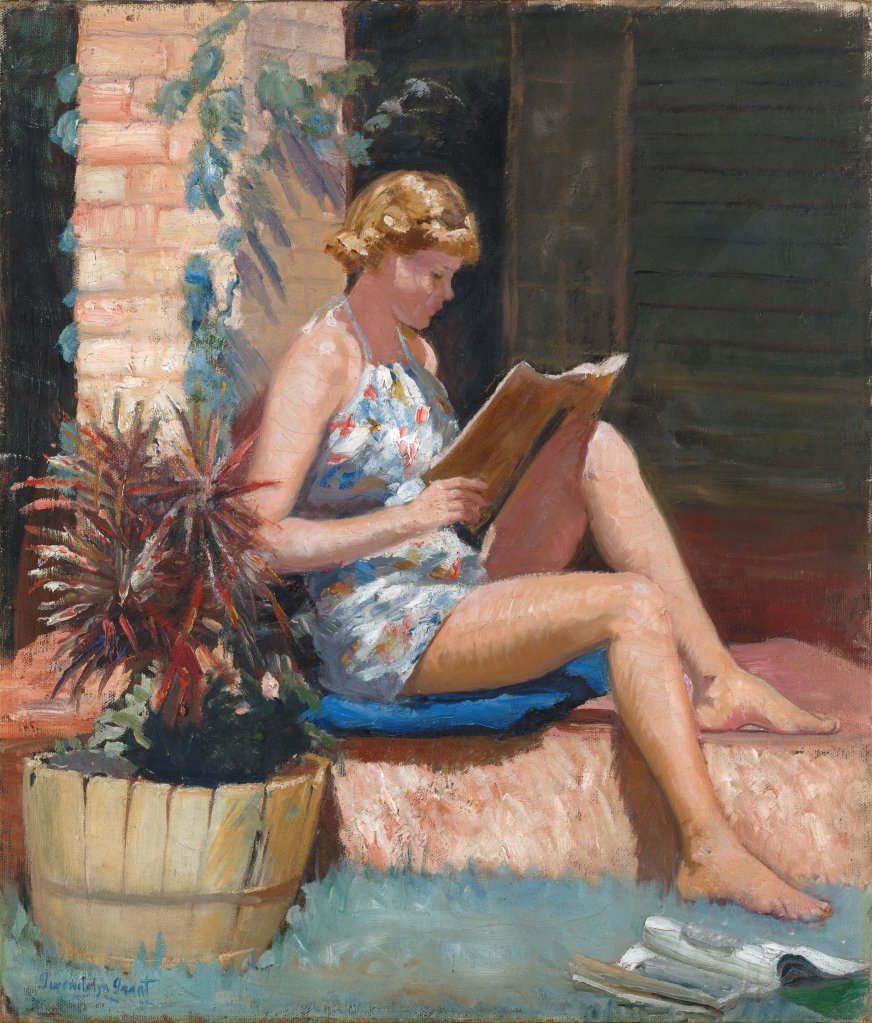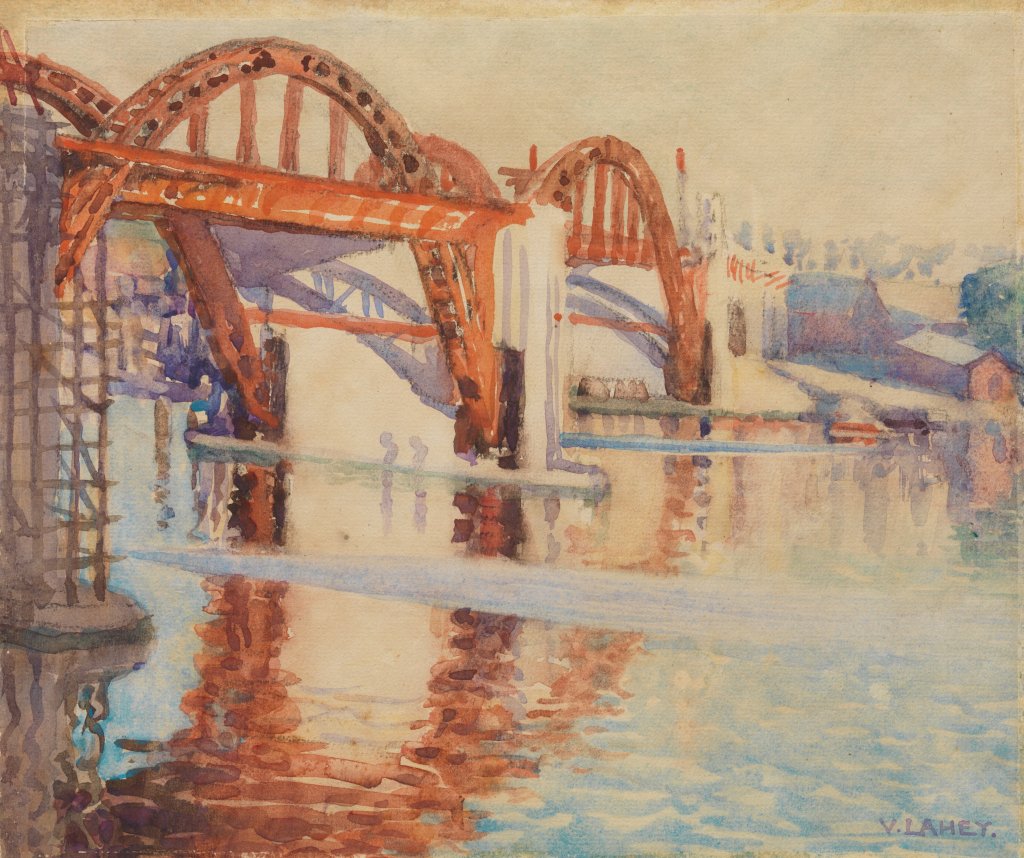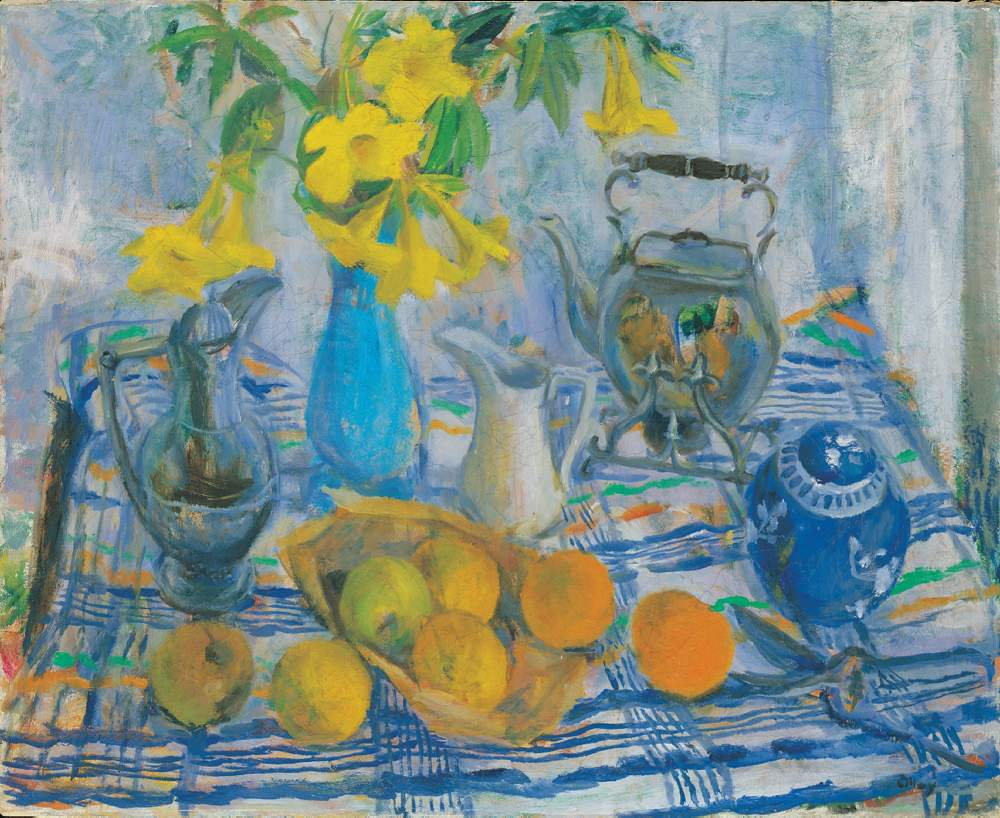The sun also rises … artfully captured mid-century
A stunning new exhibition at Queensland Art Gallery puts mid-20th century Queensland artists – and visitors drawn to the sunshine state – in the frame.

Forget about your French Impressionists and your big and flashy imported blockbuster art exhibitions – it’s time to get down to earth with some real art. From Queensland!
No, wait a minute, I’m only kidding. Or am I? Because I have just been to see Queensland Art Gallery’s newly minted exhibition, Under a Modern Sun: Art in Queensland 1930s-1950s, and it’s a ripper. It features art by Queenslanders – or about Queensland.
There are more than 140 paintings, sculptures, photographs and works of decorative art by artists from Queensland and those who travelled to work here in the mid-20th century.
People like the late great Charles Blackman. Queensland was influential in his career and his first wife, Barbara, was a Brisbane girl. Blackman first came to Queensland in 1948, hitchhiking here. He met the artists of the local Miya Studio, a breakaway group of younger painters including Laurence Hope and Laurence Collison, who railed against the conservatism of Brisbane’s art scene and the lack of social commentary.

He also met local writers including Barbara Patterson, who became his muse and wife. Significantly, it was in Brisbane at Moreton Galleries where he saw Sidney Nolan’s series of paintings based on Shipwreck survivor Eliza Fraser. Blackman was inspired by Nolan’s naïve, expressionist style. (There is a Nolan work from that series in this show.)
Blackman and Barbara moved to Melbourne in 1951 but came back to Brisbane regularly to visit family and friends, such as the poet Judith Wright on Tamborine Mountain.
You might like
Having once lived in Spring Hill, I am impressed with Blackman’s paintings of this inner-city suburb, including Interior View, Spring Hill, 1951, and particularly Self-portrait in front of a boarding house, Spring Hill, also from 1951.
So, Queensland was influential in Blackman’s life and art. The 2015 exhibition Lure of The Sun explored that in depth. Blackman is one of the stars of this current exhibition and so is Nolan.
QAGOMA’s Samantha Littley, curator, Australian art, features these and many other significant artists in this free exhibition, which includes works by Queensland artists William Bustard, William Gregory Grant, Vida Lahey, Margaret Cilento, Daphne Mayo, Carl McConnell, Jon Molvig, Margaret Olley and Leonard and Kathleen Shillam.
‘It creates a light-filled vision of Queensland and reveals the beginnings of more experimental means of expression’
Then there are our regional luminaries including Kenneth Macqueen from the Darling Downs and Indigenous artist Joe Alimindjin Rootsey, who captured his country in North Queensland.
As QAGOMA director Christ Saines points out, the exhibition celebrates “a transformative period in Queensland’s cultural and artistic evolution, during which artists introduced new creative approaches to what was then a very conservative climate”.
“It creates a light-filled vision of Queensland and reveals the beginnings of more experimental means of expression here,” Saines says.
Indeed, it does thanks to the informed and meticulous work of Littley, who knows her subject well.
Subscribe for updates

On a walk through the show, Littley highlights the work of Kenneth Macqueen. She curated an exhibition by Macqueen in 2007 during a previous stint at QAGOMA. That was a landmark show that really resurrected Macqueen. This show puts the Darling Downs artist in the frame again, figuratively and literally, and his works are so stylish, so modern and so engaging.
Littley also proudly shows off a relatively new acquisition, a Queensland inspired painting by Sidney Nolan entitled Escaped Convict, painted in 1948.

Nolan also famously painted a drought in Queensland, commissioned to do so by The Courier-Mail in 1952. There is a fascinating group of photos by Nolan from that trip on display in this show. And there are also some photos by the great Max Dupain, known mostly for this Sydney works. He got the Queensland bug, too, at one stage of his career and the proof is now hanging on the wall at QAG.

For lovers of Queensland art there are icons such as Vida Lahey, whose still life works in this show are particularly gorgeous. As a treat, hanging with them, is a floral still life by Margaret Olley who went to school and spent some formative years in Brisbane.

As Littley points out in her extensive and edifying chapter in the handsome catalogue, Modernism Comes to Brisbane, the exhibition “underscores the vital role that women artists played in fostering artistic practice in Queensland, as they worked to introduce the concepts they had encountered overseas”.
“For example, Vida Lahey’s paintings of Brisbane’s Central Station and the Grey Street Bridge under construction foreground these subjects as symbols of a burgeoning, rapidly modernising city; while her highly coloured and patterned still lifes were a vehicle through which she similarly expressed modernist ideas”.
Littley gives us an expansive introduction to the show and her chapter is followed by one titled Creating The Sunshine State by historian Peter Spearritt, who gives us a social and political history, contextualising the life and times of the artists featured.
It’s a fascinating window into an exciting time for visual art in Queensland. Set aside a morning to spend at this show. Browse, read the informative didactic panels, take a break in the QAG Café for morning tea, then go back again and browse some more. Tell them I sent you.
Under a Modern Sun: Art in Queensland 1930s-1950s, Queensland Art Gallery, South Brisbane, until January 26.
qagoma.qld.gov.au/exhibition/under-a-modern-sun-art-in-queensland-1930s-50s
Free to share
This article may be shared online or in print under a Creative Commons licence

